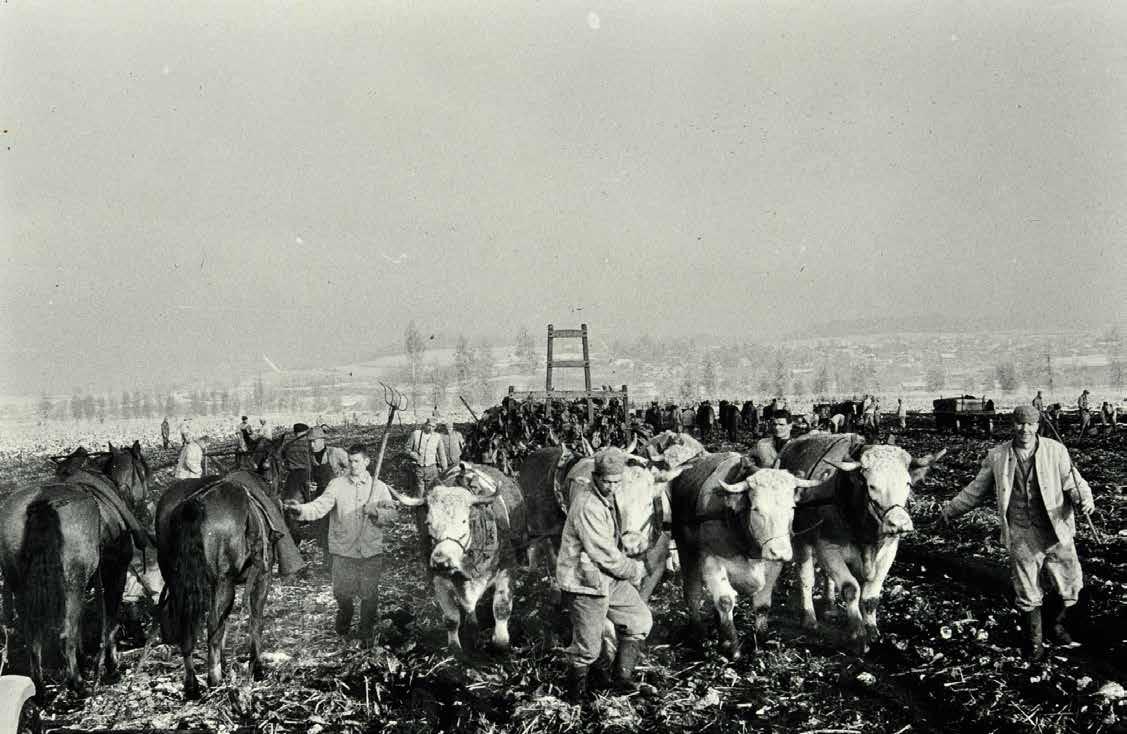
4 minute read
Semantics of Agricultural and Industrial Work
A closer look at agriculture in the industrial age
The 19 th and 20 th centuries saw dramatic social change, as industrialisation changed the way people lived and worked. How was agricultural work conceptualised in the new industrial context? How did the practices and languages of agricultural work change? These questions are at the heart of a research project at the Archives of Rural History (ARH) in Berne.
The agricultural sector has changed significantly since the industrial revolution, as the emergence of new technologies and methods has altered the nature of work on the land. Based at the Archives of Rural History in Berne, Peter Moser and Juri Auderset are conducting a research project investigating how agricultural work was re-conceptualised against a backdrop of rapid industrial development. “We are interested in how industrial societies conceptualise agricultural work. As historians we are also interested in the agricultural work itself.” Industrial manufacturing prioritises maximising output, but this goal isn’t necessarily directly applicable in the agricultural sector, where farmers and land-workers are dealing with living animals and plants that are embedded in complex and dynamic ecological systems that are subject to re-productive processes and growth-cycles. “How did people talk about work in the agricultural sector in industrializing societies and how did this language impact the way they worked?” they ask.
Semantics of Agricultural and Industrial Work. Knowledge, Metaphors of Production and the Transformation of Work in the 19 th and 20 th Centuries
Archives of Rural History (ARH) Villettemattstrasse 9 CH-3007 Bern T: +41 31 911 72 55 E: info@agrararchiv.ch W: www.agrararchiv.ch
Dr Peter Moser (left) is director of the Archives of Rural History (AHR) in Bern. He is a member of the Management Committee of the European Rural History Organisation (EURHO) and president of the European Rural History Film Association. Dr Juri Auderset (right) is researcher at the Archives of Rural History (AHR) in Bern and reader in contemporary history at the University of Fribourg. He has received his B.A., M.A. and Ph.D from the University of Fribourg.

Semantics of agricultural work
These types of questions are at the heart of the project, with Dr Moser and his colleagues looking at archival sources from farmers and labourers in the 19 th and 20 th centuries. While they focus primarily on Switzerland, they embed the Swiss experiences in the transnational contexts of these ventures, tracing the circulation of knowledge about agricultural and industrial work that was produced in the networks of 19 th and 20 th century American and European observers. The merits and possible applications of new technologies like steam engines were the subject of debate during this period, while Dr Auderset says there was also a lot of discussion about the treatment of working animals. “What is the relationship between human beings and working animals? How did the rise of the socalled machine age change the perception of working animals?” he continues. Up to the work was jointly done by human beings and animals, something which advocates of new technologies were keen to change. “We are looking at discourses on how modernisation and change can be implemented. That’s not only by replacing one thing with another, but by a process of adjusting,” explains Dr Auderset.
There is a tension between the desire to modernise agriculture and the nature of agricultural work itself. Alongside their attempts to improve efficiency and output, farmers simultaneously had to consider the re-production cycles of plants and animals. Therefore, ‘one-dimensional perceptions of change and growth seldom worked out in agriculture’, says Juri Auderset who also reminds us that in some respects agricultural work – and those who accomplished it – were very open to new technology. That there was nonetheless a perception of it as somehow backward in industrial societies is only comprehensible when one considers the difference between agricultural production and industrial manufacturing. That is an area of great interest to the authors. “Many people wanted to make agriculture as modern as possible, but when it was modernised along industrial lines, new concerns were raised. That’s
middle of the 20 th century a lot of agricultural what we are looking at, mainly from the middle of

the 19th to the middle of the 20 th century,” they outline. One major area of interest in this respect is Taylorism, a type of management theory that prioritises economic efficiency in the sense of industrial manufacturing. “We are trying to explain why Taylorism was such an inspiring force for agricultural modernisation, despite the many obstacles that stood in the way for those who were interested in applying it to farming” says Dr Auderset. “Some heralds of industrial agriculture might have dreamed of farms modelled along the line of a factory governed by Taylor’s principles,” he adds, “but the farming population had to adapt and adjust such ideas to the living nature they worked with.” Working processes in agriculture are often characterised by a complex interaction of men, animals and machines.










